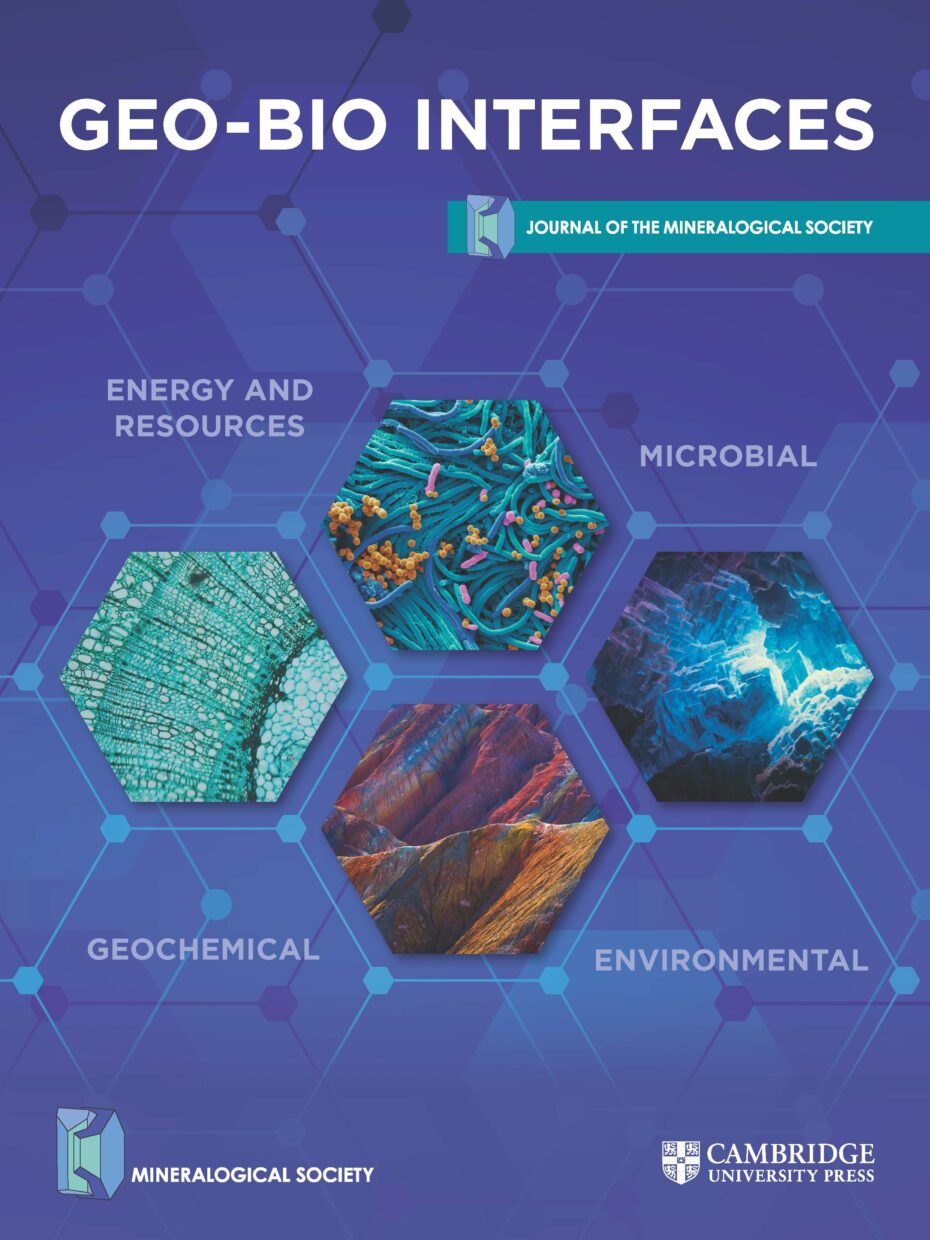Microbial Biomineralization: the goals, challenges, and emerging research with Lucian Staicu
Introducing industry-leading Guest Editor: Lucian Staicu
Geo-Bio Interfaces journal invites Guest Editor Lucian Staicu into the spotlight, where we gain a valuable insight into the field.
Lucian is one of four industry-leading Guest Editors from the up-coming themed collection, ‘Microbial Biomineralization’. Lucian’s research interests explore anaerobic respiration in bacteria and microbial biomineralization. Here, Lucian shares valuable insight by answering questions about emerging challenges the field, the up-coming special issue, and also how the interdisciplinary open access journal –Geo-Bio Interfaces – can help inform fundamental environmental remediation projects, resource recovery, and the advancement of bioeconomy.
Watch or read the interview
You can watch the recorded video, or read Lucian Staicu’s interview below.
Introduction
My name is Lucian Staicu and I’m a researcher at the University of Warsaw in Poland. My research interests explore anaerobic respiration in bacteria and microbial biomineralization.
What bought you to the field?
Lucian: I like it a lot because it is a frontier research area at the boundary between microbiology, chemistry, mineralogy and other disciplines. And, I guess, I have always been fascinated by the frontier things. And in my opinion, this is the best approach to tackle complex topics such as microbial biomineralization.
What are some of the challenges facing the field today?
Lucian: I think a better connectivity between researchers with different backgrounds and complementary expertise would help with the progress on this field. Also, a better link between academic and industry would bring much added value, in my opinion.
What appealed to you most about Geo-Bio Interfaces?
Lucian: The project as a whole was very attractive. The journal Geo-Bio Interfaces having one of the best specialists in the field in its editorial board. I also liked the multidisciplinary nature of the journal and the wider research topics that it covers.
What is the goal of your collection on Microbial Biomineralization?
Lucian: The special issue is a collaborative project including myself, Jon Lloyd, Julie Cosmidis, and Juan Liu, and it aims to publish up to date fundamental and applied research progress in microbial biomineralization.
What impact do you think this topic has within your field and more widely?
Lucian: Microbial biomineralization is growing, and full of potential research topic given its numerous fundamental and applied implications. For example, biominerals are key components of the biogeochemical cycle of elements in nature, and the fuller understanding will help inform environmental remediation projects, and from an applied side, biominerals can be linked with resource recovery and bioeconomy.
What do you enjoy most about being an Editor?
Lucian: As editors, we bring our service to science in other capacities than being authors. I like it particularly because it offers a better, let’s say, behind the scenes perspective on the editorial process, and it also brings an informed perspective of the future of scientific trends.
What is your favourite mineral and why?

Lucian: My favourite mineral is cinnabar, that is the red mercury sulphide, also known as vermilion. Until the discovery of cadmium red in the early twentieth century, vermilion was the most widely used red pigment in the artistic productions around the world. Important examples can be found in Chinese art, in Pompeii, that is the south of Italy, or in the European painting, for example, Dutch master Johannes Varmeer. Next time, when you visit a museum think that the vibrant red colour you are seeing may originate from this beautiful mineral.
About the Special Collection on Microbial Biomineralization
Lucian Staicu of University of Warsaw, Poland will edit the Special Collection alongside fellow Guest Editors:
- Juan Liu, Peking University, Beijing, China
- Julie Cosmidis, University of Oxford, UK
- Jonathan Lloyd, The University of Manchester, UK
The main goal of this special collection on Microbial Biomineralization is to focus on the fundamental and applied progress in microbial biomineralization, inviting contributions based on multidisciplinary studies and covering different research aspects such as:
- Biominerals resulting from microbial respiratory and detoxification processes;
- The importance of microbial biomineralization in the context of environmental depollution;
- The recovery of high value biominerals from secondary/waste resources such as industrial streams;
- The role and mechanisms of biomineralization on natural biogeochemical cycles;
- Biomineralization-inspired methods for medical applications, e.g. natural or synthetic bone mimetic materials or nanovaccine biomineralization
Authors wishing to submit to this collection should do so through the Geo-Bio Interfaces submission and peer review system and should select the option to submit to a collection, then choose ‘Collection: Microbial Biomineralization’ from the drop-down menu. Find out more about the collection, by viewing the special collections. The deadline for submissions is 29 February 2024.
Geo-Bio Interfaces is an official journal of the Mineralogical Society. It aims to answer fundamental and emerging questions in geoscience and bioscience, by exploring contemporary scientific disciplines and the interconnection between them. The journal covers four primary spheres of academic interest that intersect with the geo- and biosciences: microbial, environmental, geochemical, and energy and resources. Original submissions describing fundamental, theoretical, experimental, or applied interdisciplinary studies pertaining to any spatial or temporal scale are considered for publication.
Geo-Bio Interfaces is a Gold Open Access journal, publishing research articles, reviews, and rapid communications. By rapidly disseminating high-quality, broadly relevant scientific results, the journal furthers the course of modern geoscience and accomplishes the purpose of the Mineralogical Society.







